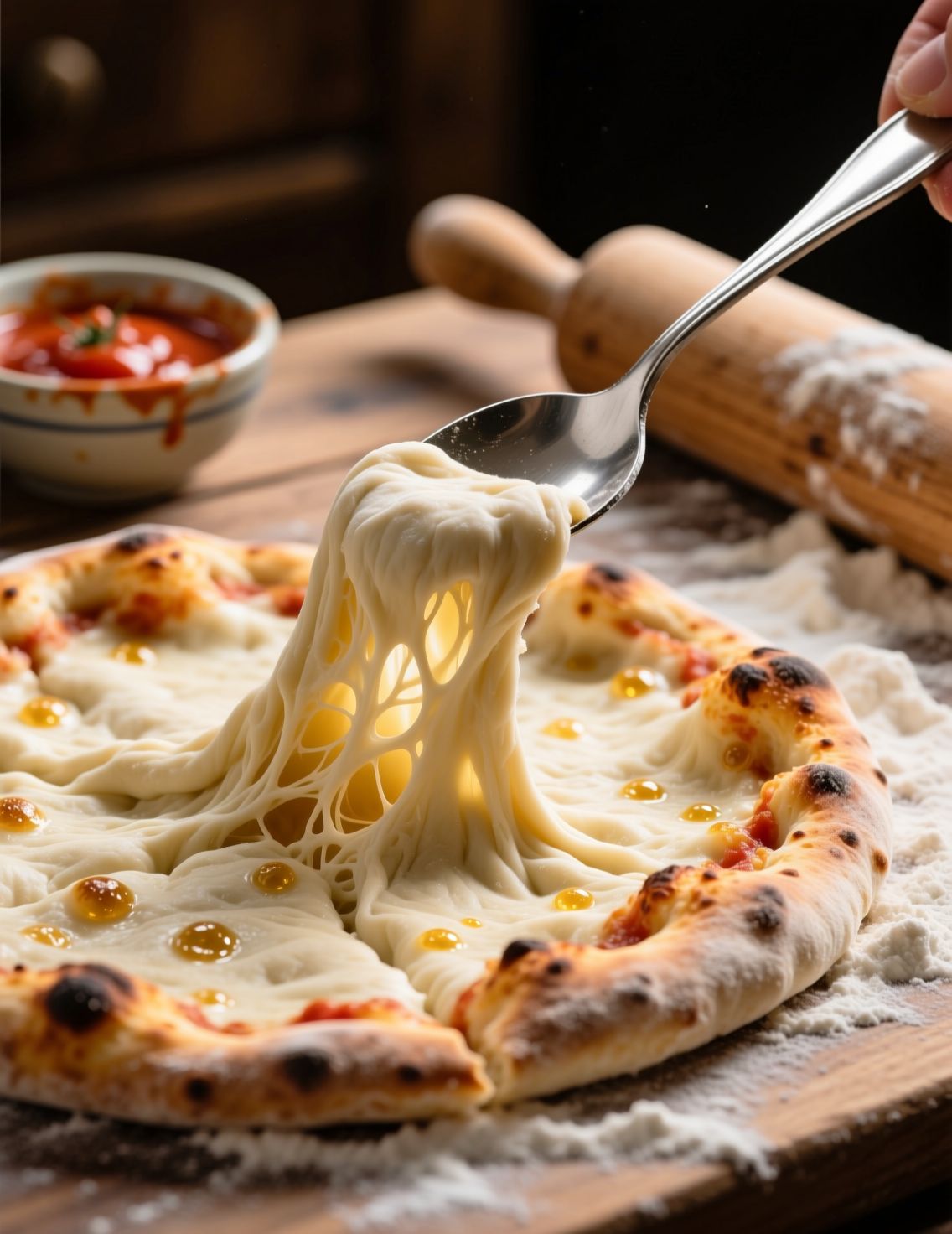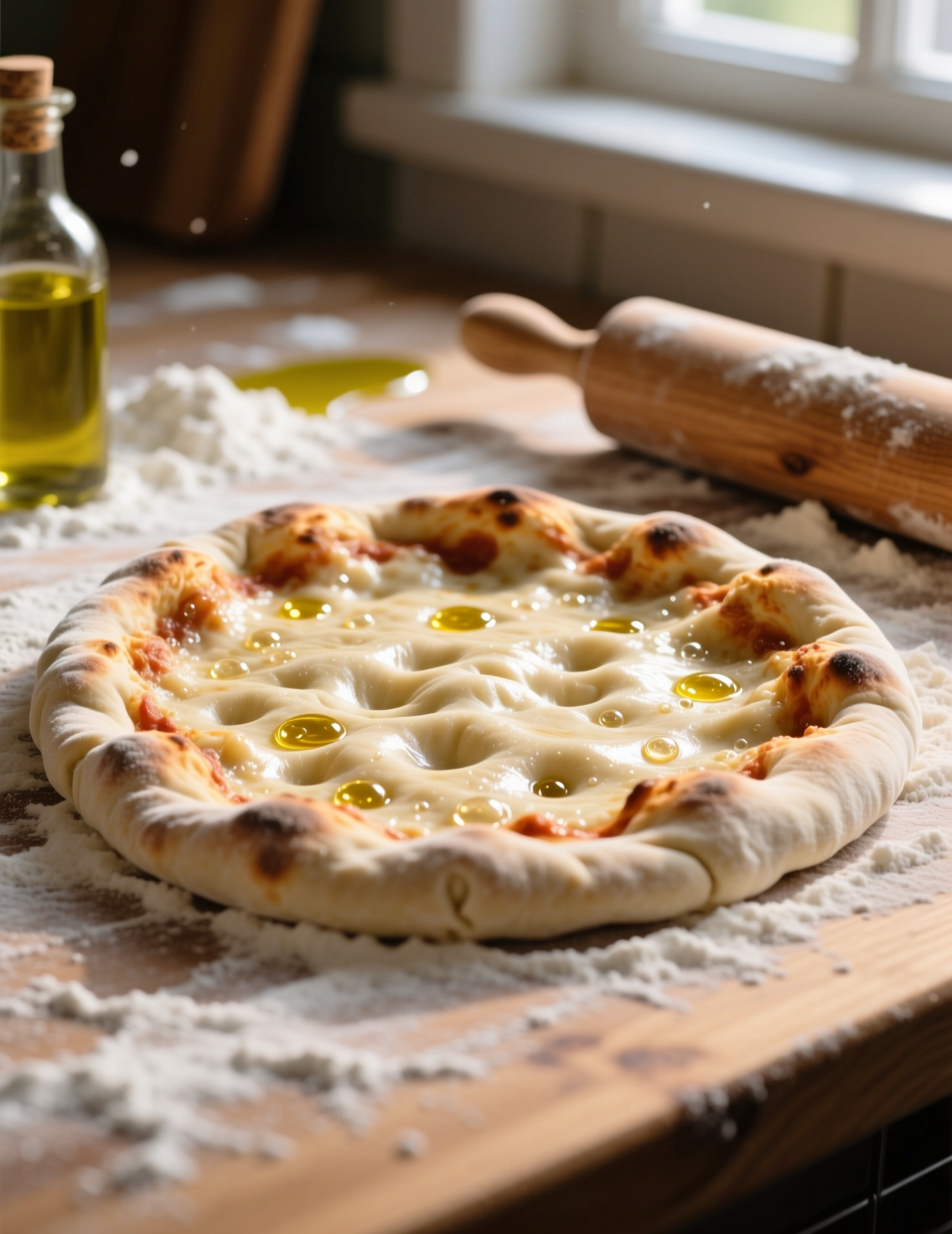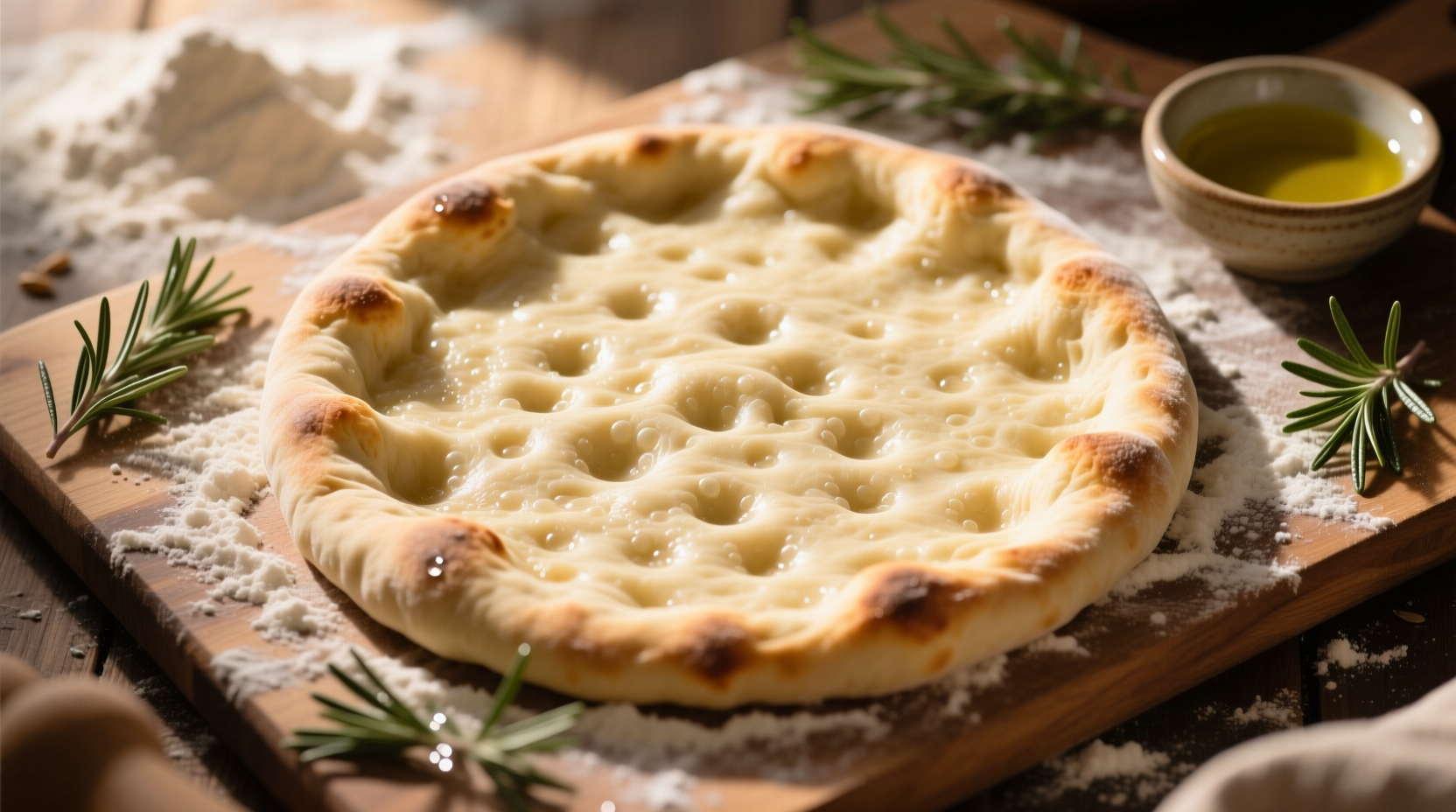Pizza dough looks deceptively simple—flour, water, yeast, salt, maybe a dash of oil. Yet, professionals know it’s the hardest part to master. Sauce and cheese are forgiving, but dough? Dough is the truth-teller. Get it right, and you’ve got a crisp but airy crust with that subtle chew. Get it wrong, and it’s either dense, rubbery, or worse, bland. This article dives deep into the world of homemade pizza dough, not as a casual hobbyist but as someone chasing mastery.
Why Pizza Dough Matters More Than Toppings
Most people think toppings define pizza. Professionals quietly laugh at that. Dough is 70% of the eating experience. In Naples, where pizza was codified into art, pizzaiolos spend years perfecting fermentation times and hydration levels before worrying about what goes on top. A great dough carries flavor before you add a single tomato or cheese. The crumb, the blistering, the balance of chew and crunch—those are results of science and craft, not random luck.
Ingredients: Simplicity is a Mask
Flour
Not all flours are equal. All-purpose flour makes decent dough, but it lacks strength for long fermentation. Professional pizzaiolos reach for high-protein bread flour or, even better, tipo “00” flour from Italy. “00” refers to the fineness of the grind, not the protein. The protein sits around 11–12.5%, giving elasticity without gumminess. If you want airy cornicione (the puffy rim), protein strength matters.
Water
Hydration changes everything. Most home recipes call for 60–65% hydration (that’s water weight relative to flour weight). Professionals often push to 70–75% for a lighter, open crumb. But higher hydration requires skill—the dough becomes sticky, demands better handling, and rewards you with a more delicate crust. Water quality matters too. Hard water slows yeast; very soft water can make dough too slack. In Naples, the mineral balance of the water quietly contributes to dough character.
Yeast
You can use active dry, instant, or fresh yeast. Professionals increasingly lean on natural leavening or a hybrid method—tiny amounts of yeast plus a preferment (biga, poolish, or sourdough starter). Why? Flavor. Long fermentation with less yeast avoids that “yeasty” punch and instead gives nuanced notes of nuts, butter, and slight tang.
Salt
Salt regulates fermentation, strengthens gluten, and, of course, brings flavor. Without it, dough collapses into bland mush. Standard ratios hover around 2–2.5% of flour weight. Professionals rarely eyeball this. A 1000g flour batch gets about 20–25g salt.
Oil (optional)
Traditional Neapolitan pizza forbids it, but New York–style and focaccia-style pizzas embrace olive oil. It tenderizes the crumb and adds richness. It also changes browning behavior—oil conducts heat differently than flour-water mixtures.

The Science of Gluten and Fermentation
When you hydrate flour, proteins gliadin and glutenin bind to form gluten. Gluten is your structure. Think of it as the net that holds fermentation gases. Strong gluten means airy pockets, weak gluten means pancake-flat crust. Kneading organizes gluten strands, but time also builds structure. That’s why autolyse—a rest period after mixing flour and water—improves extensibility without extra kneading.
Fermentation is the second pillar. Yeast doesn’t just puff the dough; it rewrites flavor. As yeast consumes sugars, it produces carbon dioxide and ethanol. But more importantly, enzymes break down starches into simple sugars, and bacteria (if using natural starter) contribute acids. Long, cold fermentation (24–72 hours at 38–40°F) slows yeast activity, allowing complex flavors to develop. Quick doughs—those mixed and baked within 2 hours—taste flat, even if they rise properly.
A 2019 study in Food Research International found that extended fermentation improved volatile aroma compounds by over 40%, giving baked dough more layered taste. That’s why professionals always plan pizza at least a day ahead.
Step-by-Step: A Professional Homemade Pizza Dough
Ingredients (for ~4 pizzas, 250g each)
- 1000g bread or tipo “00” flour
- 700g water (70% hydration)
- 2g instant yeast (or 0.1g fresh yeast if using 48-hour fermentation)
- 25g salt
- 20g olive oil (optional, for non-Neapolitan style)
Method
- Autolyse
Mix flour and 650g water (hold back the rest). Let rest 30 minutes. This step lets enzymes start gluten development naturally. - Mix and Knead
Add yeast, remaining water, then salt. Knead gently until smooth, about 8–10 minutes. Dough should feel tacky but not sloppy. Professionals often do “stretch and folds” instead of hard kneading—less oxidation, more open crumb. - Bulk Fermentation
Cover and let rise at room temp for 1 hour. Perform a set of stretch and folds every 30 minutes if possible. Then move dough to the fridge for 24–72 hours. - Divide and Ball
Remove from fridge. Divide into 250g portions. Shape into tight balls by tucking edges underneath. Rest covered at room temperature for 2–3 hours before baking. - Shaping
Never use a rolling pin. Press from center outward, leaving edges untouched. Let gravity and gentle stretching do the work. This preserves gas bubbles that make airy crust. - Bake
For home ovens, crank to max (usually 500–550°F). Preheat a baking steel or stone for at least 45 minutes. Bake pizza 6–8 minutes, or until crust blisters. If you have access to a wood-fired oven, you’re aiming for 800–900°F, with bake times under 90 seconds.
Common Mistakes in Homemade Pizza Dough
- Too much yeast – Over-yeasting gives strong rise fast but kills flavor.
- Not enough fermentation – Dough may rise, but without time, it lacks complexity.
- Overworking dough – Excess kneading oxidizes dough, bleaching flavor compounds.
- Cold dough shaping – Trying to shape straight from fridge tears gluten. Always let it relax first.
- Wrong flour choice – Low-protein flour can’t hold gas for long fermentation.
Regional Styles and Dough Adjustments
- Neapolitan – 00 flour, 60–65% hydration, no oil, short bake at extreme heat.
- New York–style – Bread flour, 63–65% hydration, a touch of sugar and oil, baked longer at moderate heat.
- Sicilian/Detroit – Higher hydration (75–80%), thicker dough, lots of oil in pan for a fried-like crust.
- Roman al taglio – Extremely high hydration (80–85%), cold ferment, airy like ciabatta.
Each style is a story told through dough ratios and baking environment. A true professional learns to adjust formula, not copy blindly.
Trends in Modern Pizza Dough
Artisan pizza makers are experimenting with heritage grains—spelt, einkorn, rye. These add earthy complexity but require blending with strong wheat flour to prevent collapse. Another trend is extended fermentation, sometimes 5 days, yielding doughs that practically melt on the tongue. Hybrid ferments—commercial yeast plus wild starter—offer reliability with deeper flavors. Even hydration is being pushed. Some avant-garde pizzaiolos push 90% hydration, handling dough like liquid.

Addressing Misconceptions
- “Sugar is essential.” Not true. Yeast feeds on flour’s natural sugars. Sugar helps browning in lower-temp ovens, but it’s not mandatory.
- “You need lots of yeast.” Wrong. Less yeast, more time equals better flavor.
- “Room-temp dough is unsafe overnight.” With correct salt ratio and small yeast amounts, room fermentation is safe and traditional in many cultures.
- “You can’t get pizzeria results at home.” With a baking steel, high hydration, and long fermentation, home results can rival pros.
The Emotional Side of Pizza Dough
Professional cooking isn’t just ratios and hydration charts. There’s an emotional rhythm. Watching dough swell slowly in the fridge, the smell of fermentation when you lift the lid, the gentle pushback of gluten under your fingers—that’s craft. Pizza dough teaches patience. It refuses to be rushed. And maybe that’s why it holds such universal love: you wait, you tend, you coax it into life, and it rewards you with something far greater than the sum of its parts.
Conclusion: The Professional Takeaway
Homemade pizza dough isn’t about shortcuts. It’s about respecting time, ingredients, and process. Use strong flour, hydrate generously, let fermentation do the heavy lifting. Handle gently, bake hot, and don’t panic if your dough looks messy—often, messy dough bakes into the most beautiful crust.
For professionals, mastering dough means freedom. You’re no longer bound to store-bought shortcuts. You can craft Neapolitan purity, New York chew, or even invent your own style. And for all the science, at the end of the day, it’s also magic: flour, water, salt, yeast—made alive.
FAQs
What type of flour is best for homemade pizza dough?
High-protein bread flour or Italian tipo “00” flour works best for strong gluten and airy crust.
How much water should I use in pizza dough?
Aim for 65–70% hydration for balanced dough, though advanced bakers push higher.
Do I need sugar in pizza dough?
No, sugar isn’t essential—yeast feeds on natural sugars from the flour.
How long should I ferment pizza dough?
At least 24 hours cold ferment gives the best flavor and texture.
Can I use a rolling pin to shape pizza dough?
Avoid rolling pins; they deflate air pockets and flatten the crust.
What temperature is ideal for baking pizza at home?
Use your oven’s max (500–550°F) with a baking steel or stone.
Should I add olive oil to my dough?
It depends on style—New York–style benefits from it, Neapolitan does not.
Why does my dough taste bland?
Usually from skipping salt or not fermenting long enough.
Can I freeze homemade pizza dough?
Yes, portion and freeze after the first rise, then thaw slowly before use.
Why is my dough sticky and hard to handle?
High hydration doughs are sticky but reward you with a lighter crust.

Mariana is a passionate home cook who creates delicious, easy-to-follow recipes for busy people. From energizing breakfasts to satisfying dinners and indulgent desserts, her dishes are designed to fuel both your body and hustle.
When she’s not in the kitchen, she’s exploring new flavors and dreaming up her next recipe to share with the Foodie Hustle community.

